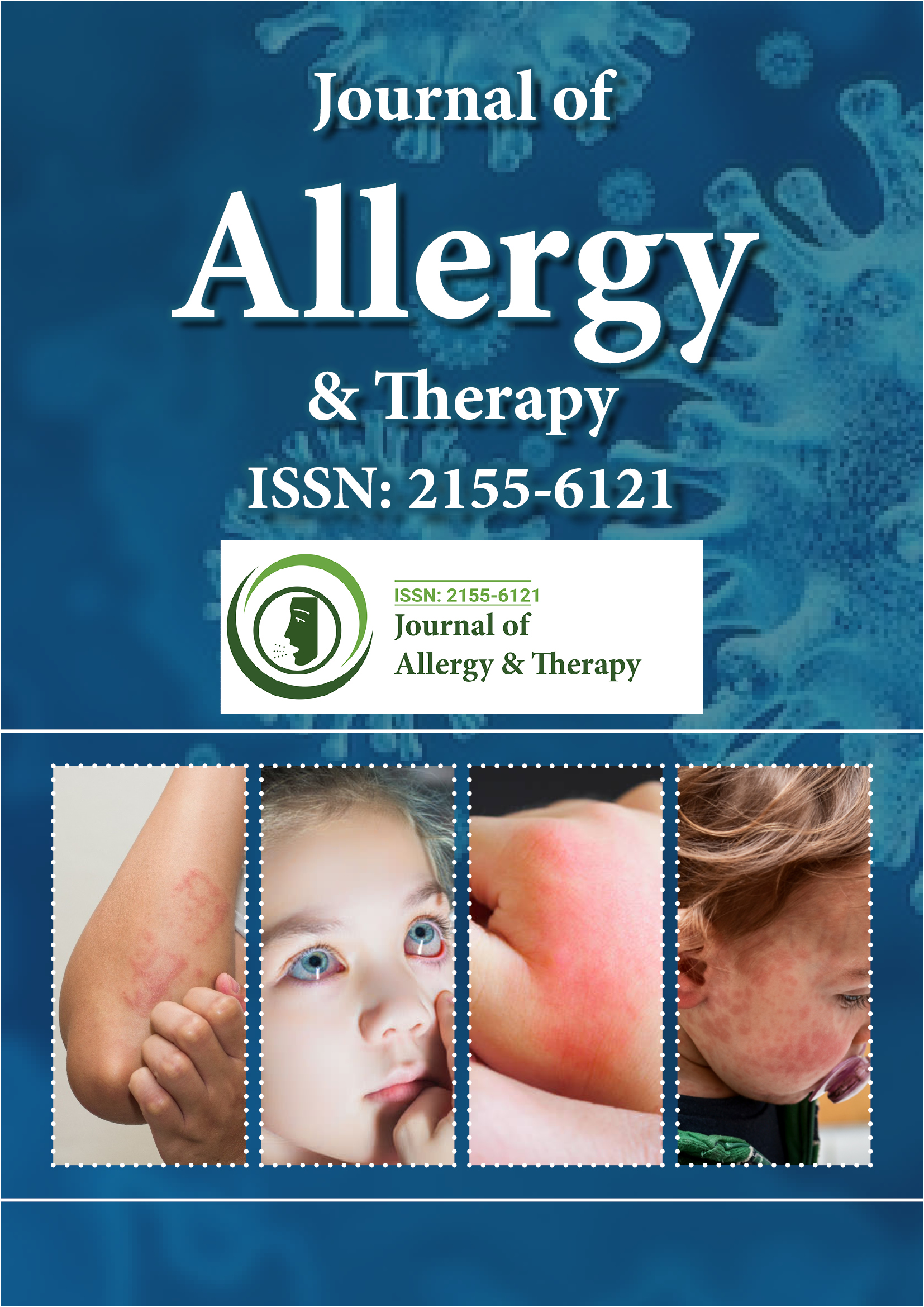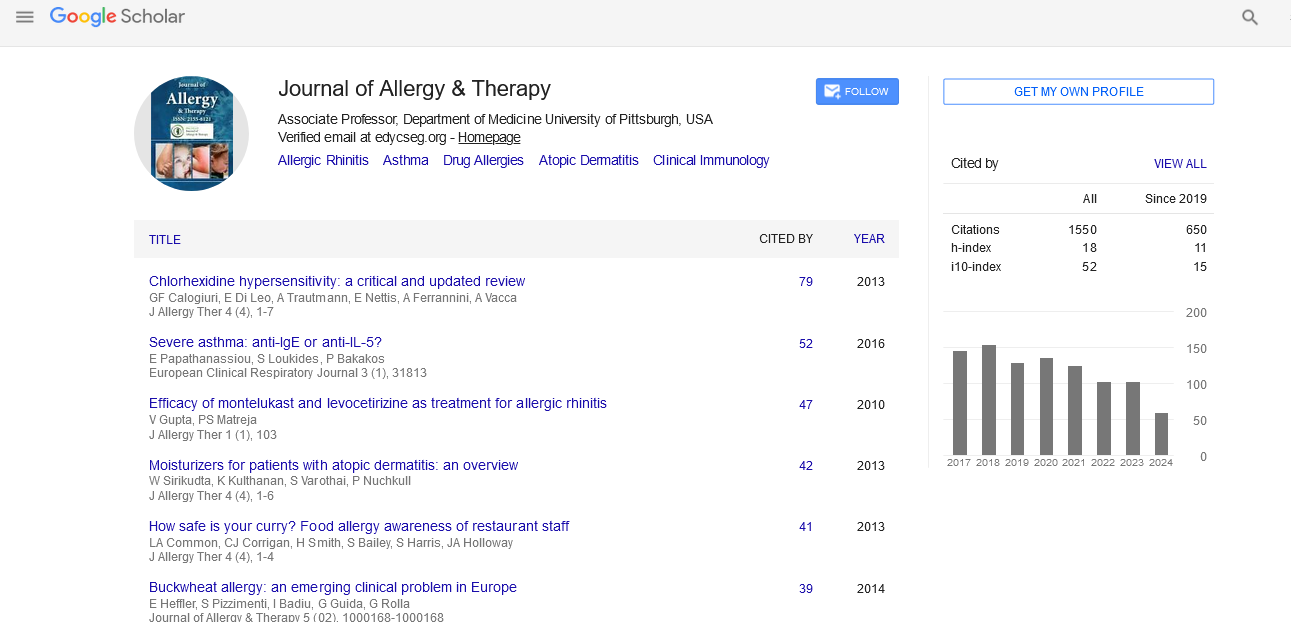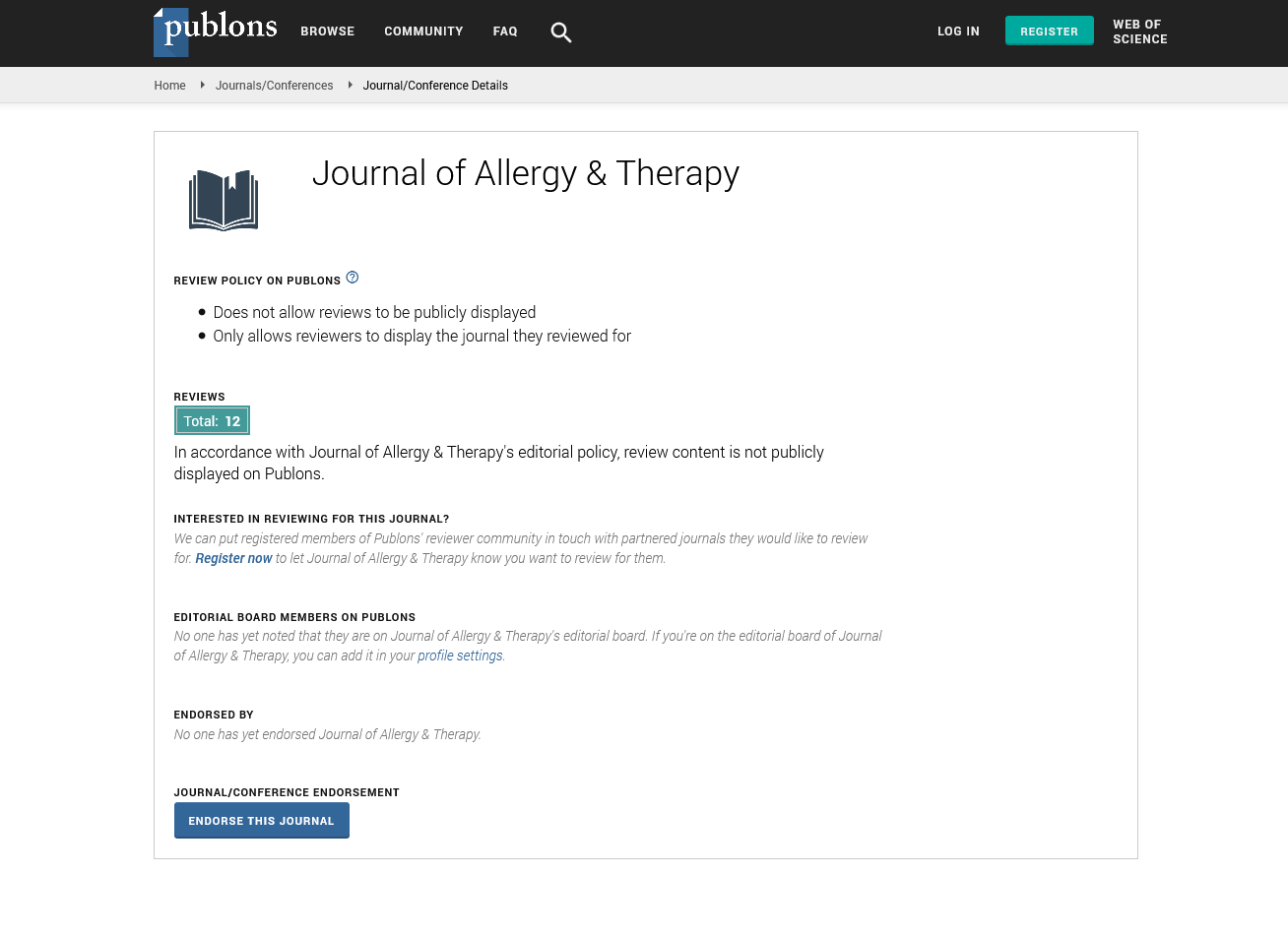Indexed In
- Academic Journals Database
- Open J Gate
- Genamics JournalSeek
- Academic Keys
- JournalTOCs
- China National Knowledge Infrastructure (CNKI)
- Ulrich's Periodicals Directory
- Electronic Journals Library
- RefSeek
- Hamdard University
- EBSCO A-Z
- OCLC- WorldCat
- SWB online catalog
- Virtual Library of Biology (vifabio)
- Publons
- Geneva Foundation for Medical Education and Research
- Euro Pub
- Google Scholar
Useful Links
Share This Page
Journal Flyer

Open Access Journals
- Agri and Aquaculture
- Biochemistry
- Bioinformatics & Systems Biology
- Business & Management
- Chemistry
- Clinical Sciences
- Engineering
- Food & Nutrition
- General Science
- Genetics & Molecular Biology
- Immunology & Microbiology
- Medical Sciences
- Neuroscience & Psychology
- Nursing & Health Care
- Pharmaceutical Sciences
Commentary - (2022) Volume 13, Issue 3
Utricaria-Treatment and Diagnosis
Tenite Shanthi*Received: 01-Mar-2022, Manuscript No. JAT-22-16200; Editor assigned: 04-Mar-2022, Pre QC No. JAT-22-16200 (PQ); Reviewed: 18-Mar-2022, QC No. JAT-22-16200; Revised: 25-Mar-2022, Manuscript No. JAT-22-16200 (R); Published: 04-Apr-2022, DOI: 10.35248/ 2155-6121.22.13.278
Description
Urticaria is a complaint characterized by erythematous, edematous, itchy and flash urticarial pillars, and covering the skin and mucous membranes. It's a veritably common reality, 8.8-20 of individualities in the community experience an attack of urticaria at least formerly in their continuance. It can be seen in all periods and relations but is slightly more common in youthful grown-ups. In 40-50 of the cases, urticaria and angioedema are seen in combination, only urticaria or angioedema is seen in 40 and 20 of the people, independently.
The main medium in the conformation of urticaria is the release of various intercessors from mast cells. Type 1 immunoglobulin (Ig) E-dependent acuity response is seen in acute urticaria. The antigen entering the body binds to specific antibodies on mast cells and basophils, causing the release of numerous intercessors, primarily histamine. As a result, edema due to erythema and increased permeability secondary to vasodilatation. Mast cells cannot be re stimulated until re granulation after degranulation, which explains why the urticaria plate doesn't reappear for several days on the region.
In habitual urticaria, the antigen entering the body binds to the IgE high affinity (FcεRIα) Fc receptor located on the mast cells and circulating basophils in the skin and degranulation from these cells occurs. When the same antigen is encountered for the 2nd time, these IgE antibodies that are formerly present on the mast cells and basophils incontinently bind to the antigen and develop an antipathetic response more snappily. This shows us that autoimmunity is also important in habitual urticaria.
Alternate- generation H1-antihistamines (e.g., cetirizine, loratadine, fexofenadine), taken regularly, are the first- line pharmacological treatment. The cure can be over-titrated to 4 times standard cure if symptoms remain at 2 to 4-week intervals. Due to anticholinergic parcels and the adverse effect profile on the central nervous system, the routine use of first- generation H1-antihistamines is no longer recommended.
Urticaria and angioedema have analogous underpinning pathophysiologic mechanisms histamine and other intercessors released from mast cells and basophils. However, it results in urticaria, whereas if the release occurs in the deeper dermis and subcutaneous tissues, If the release occurs in the dermis. Immunoglobulin E (IgE) frequently mediates this release, butnon-IgE and non-immunologic mast cell activation also can do. Proteases from aeroallergens and activation of the complement system have been proposed as exemplifications of non-IgE triggers. There may be a serologic autoimmune element in a subset of cases with habitual urticaria, including antibodies to IgE and the high- affinity IgE receptor. Still, the clinical significance of these autoantibodies is unclear Anti-IgE antibodies can also be plant in atopic dermatitis and several autoimmune conditions.
The urticarial shrine has three characteristics as characteristic redness, blistering, and itching. Occasionally, a burning sensation may accompany. Lesions can do anywhere in the body and recover in roughly 2-3 h without leaving a trace. This robotic recovery can occasionally last up to 1 day.
It's relatively easy to diagnose grounded on clinical appearance and memory. Still, it's also occasionally confused with medicine eruptions, viral rashes, connective towel conditions, photosensitive conditions, urticaria pigmentosa, urticarial vasculitis, and a number of syndromic conditions.
Acute urticaria is generally tone- limited and resolves with proper avoidance of triggers. With habitual urticaria, a prospective cohort study plant that 35 of cases are symptom free within one time, with another 29% having some reduction of symptoms. Robotic absolution passed within three times in 48% of the cases of idiopathic habitual urticaria, but only 16% of the cases of physical urticaria. 28% Another prospective study in children plant absolution rates at one, three, and five times to be 18, 54, and 68% independently. 29% Cases may witness repeated occurrences throughout their live.
Citation: Shanthi T (2022) Utricaria-Treatment and Diagnosis. J Allergy Ther. 13:278.
Copyright: © 2022 Shanthi T. This is an open access article distributed under the terms of the Creative Commons Attribution License, which permits unrestricted use, distribution, and reproduction in any medium, provided the original author and source are credited.


